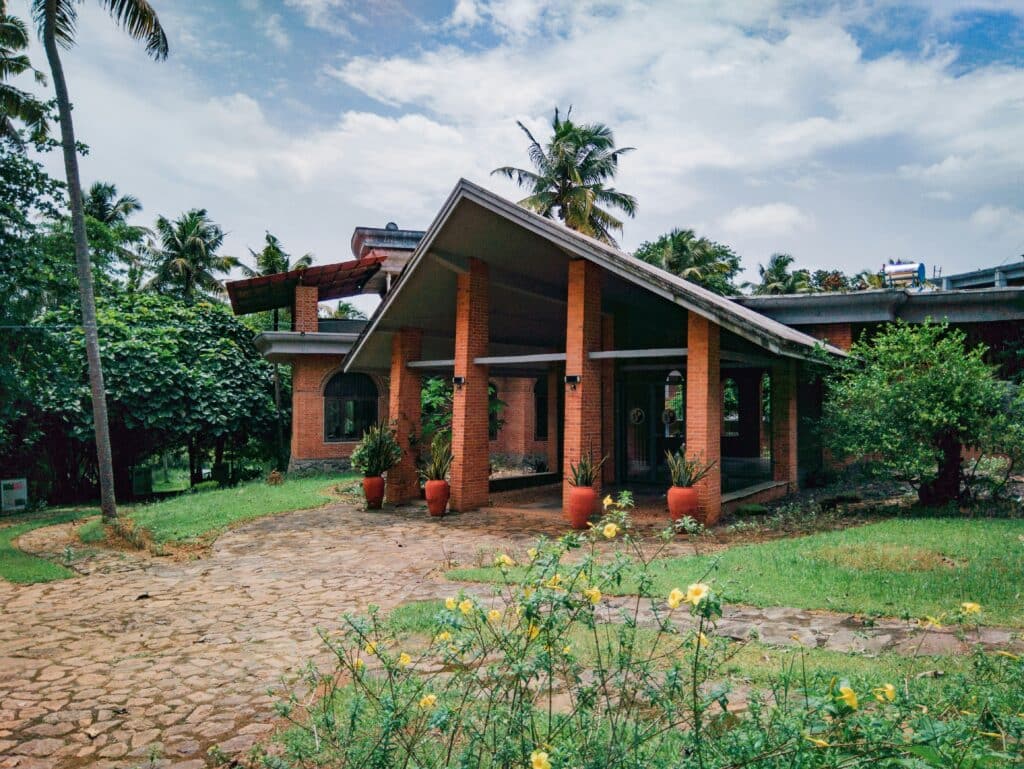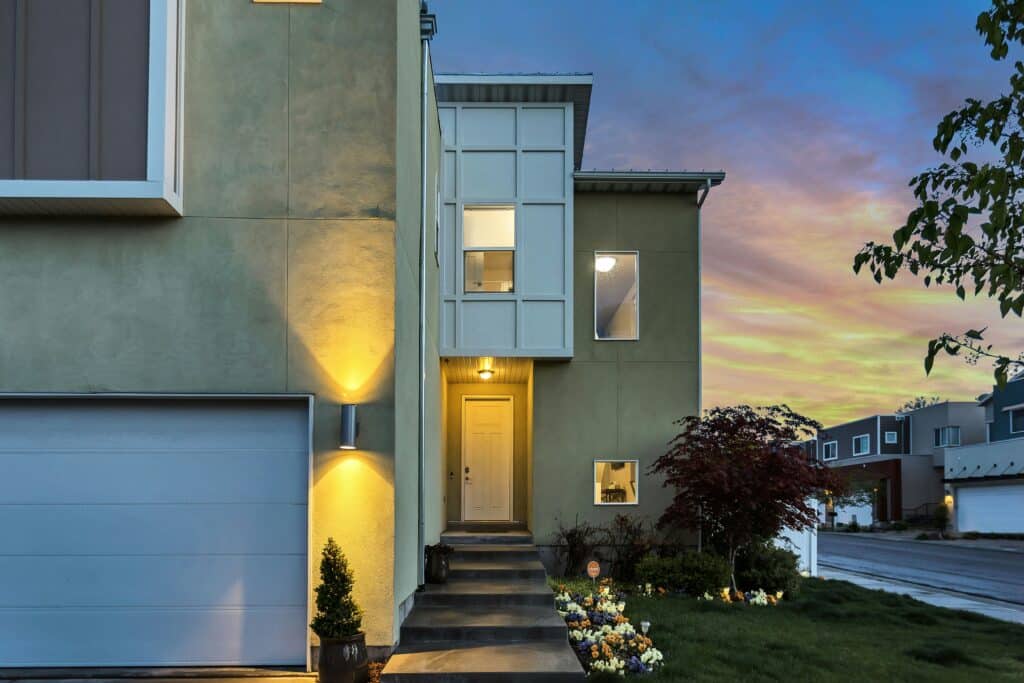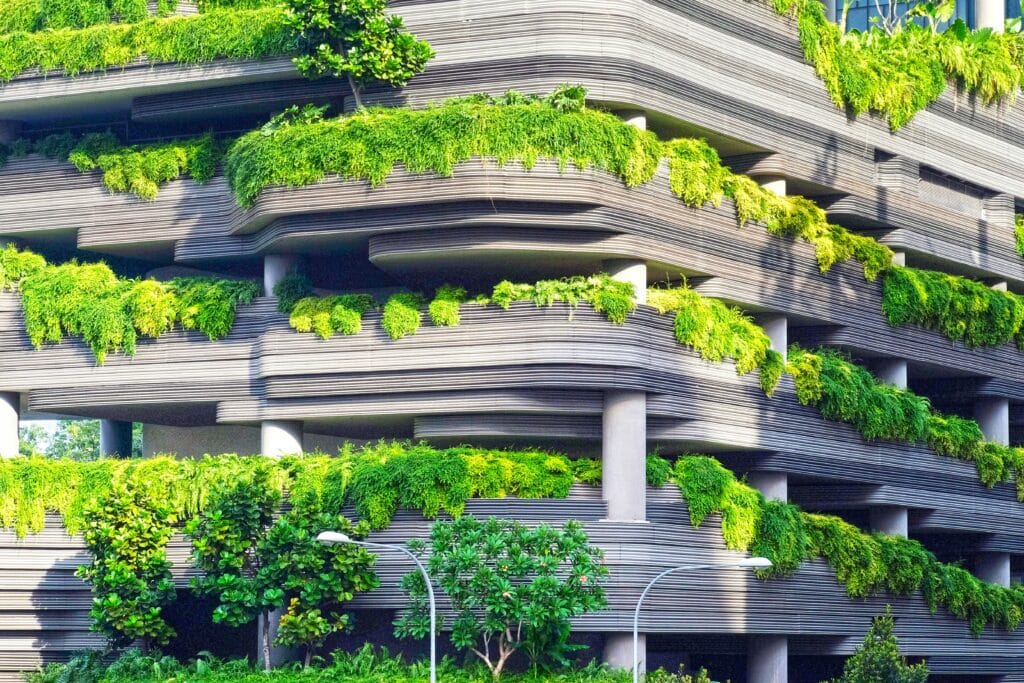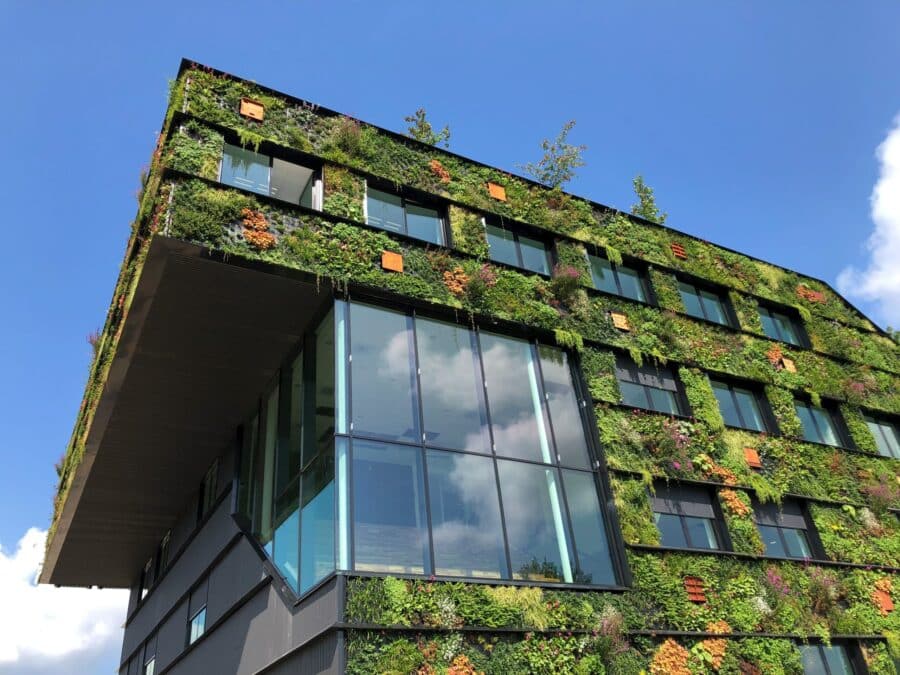Architecture trends for 2024 are coming in with a bang and are bound to get you excited about the future. In particular, sustainability in architecture continues to shape the future of design.
We see this through the integration of cutting-edge technologies like parametric modeling, 3D printing, and sustainable materials to create structures that not only meet the needs of today, but also mitigate environmental impact for generations to come.
We can say with certainty that sustainability is no longer an afterthought when designing, and is now instead a fundamental consideration in every stage of the architectural process. Together, innovation and sustainability are not only redefining how architecture looks, but also paving the way for a more harmonious relationship between the human population and our planet.
If this sounds like music to your ears, scroll on to discover all the top 2024 conception architecturale trends.
Sustainable and Eco-friendly Designs
Sustainable and eco-friendly designs prioritize environmental responsibility and resource efficiency in architecture. These designs intentionally minimize negative impacts on the planet while also promoting healthier indoor environments and community resilience. As climate change urgency grows, sustainable design becomes essential for a greener future, so let’s review some of the top ways we’re seeing this in architecture.
Integration of Eco-friendly Materials
Innovative architects are increasingly incorporating eco-friendly materials into their designs. This includes recycled steel, reclaimed wood, bamboo, cork, and recycled plastics. By prioritizing these eco-friendly materials, architects not only reduce resource depletion but also mitigate pollution and waste generation throughout the construction process.
Implementation of Energy-efficient Technologies
The use of energy-efficient technology lies at the heart of sustainable architecture. From passive design strategies like orientation and natural ventilation to advanced systems such as solar panels, geothermal heating, and smart building automation, architects use a variety of technologies to minimize energy consumption and reliance on fossil fuels. Together, this ultimately reduces carbon emissions and operational costs for building owners.
Embracing Green Building Practices
Green building practices, including LEED (Leadership in Energy and Environmental Design) certification and biophilic design principles, are increasingly embraced by architects committed to sustainability. These practices prioritize strategies like optimizing site usage, preserving natural habitats, and promoting occupant well-being through access to daylight, views of nature, and indoor air quality enhancements, fostering environments that nurture both people and the planet.
Examples of Sustainable Architectural Projects
To help you get a feel for how architects are making their designs more sustainable and eco-friendly, we’ll go over some examples.
The Edge in Amsterdam, renowned as the world’s most sustainable office building, incorporates innovative features such as solar panels, energy-efficient LED lighting, and a smart system that adjusts climate and lighting based on occupancy.
The Bullitt Center in Seattle is all about sustainability, meeting its energy needs entirely from renewable sources. This building also uses composting toilets and rainwater harvesting.
Both of these projects demonstrate that sustainable architecture is not just a theoretical concept but a tangible reality that is shaping the future of our surroundings.

Adaptive Reuse and Renovation
Adaptive reuse and renovation redefine architectural practices by transforming existing structures into vibrant, sustainable spaces. With this approach, architects can breathe new life into old buildings, ensuring that they preserve important heritage details while also meeting modern needs. This also helps to reduce waste and environmental impact, bringing together past and present in the best possible way. Here are some of the ways in which architects are accomplishing this:
Emphasizing the Importance of Adaptive Reuse
With sustainability becoming more and more popular, the importance of adaptive reuse for architects continues to grow. With limited space and resources, repurposing existing structures offers a sustainable solution to meet changing needs while preserving cultural heritage. Architects tasked with adaptive reuse projects are challenged to reimagine spaces, blending history with modern functionality.
Repurposing Existing Structures for Sustainability
You’ve likely seen this idea in action in your own neighborhood. With this idea, architects renovate old buildings to minimize environmental impact, preserve resources, and foster community revitalization. This approach reduces waste and energy consumption while honoring cultural heritage.
Preserving Cultural and Historical Significance
As we’ve mentioned, when considering renovating historical sites, architects aren’t simply tearing down buildings and designing new modern ones. Instead, the preservation of the cultural and historical significance of the building is heavily considered before any changes are made. In fact, the preservation of cultural and historical significance is a fundamental aspect of architectural practice.
Architects identify, document, and conserve structures that hold cultural and historical significance. They do this through meticulous research, sensitive restoration, and adaptive reuse, which helps to maintain the authenticity and integrity of these sites while also allowing for their continued use and enjoyment by communities.
Notable Examples of Successful Adaptive Reuse Projects
The High Line in New York City stands as a prime example of a successful adaptive reuse project. In this scenario, an abandoned elevated railway was transformed into a vibrant public park, seamlessly blending nature with urban infrastructure.
Another remarkable project is the Tate Modern in London, once a disused power station, now a world-renowned museum of contemporary art, showcasing the harmonious integration of industrial heritage with cultural revitalization.
Closer to nature, the Eden Project in Cornwall repurposed an abandoned china clay pit into a sprawling botanical garden and educational center, demonstrating how architecture can coexist harmoniously with the environment.
These projects not only breathe new life into forgotten spaces but also serve as inspiring models for sustainable urban renewal and community engagement.

Smart and Responsive Architecture
Smart and responsive architecture revolutionizes building design by integrating cutting-edge technologies to optimize comfort, efficiency, and sustainability. It entails structures that dynamically adapt to changing conditions and user preferences in real time, promising a future where buildings become intuitive and deeply attuned to their surroundings and occupants. Let’s dig a bit deeper into some of the ways that architects are using smart and responsive architecture:
Integration of Smart Technologies in Design
The integration of smart technologies in design represents a significant evolution in architecture, where buildings become more than static structures, but rather dynamic entities. By incorporating sensors, data analytics, and automation systems, architects can create spaces that intelligently adapt to environmental conditions, user behavior, and energy demands.
Together, these technologies enhance comfort, efficiency, and sustainability, which not only improves the overall functionality of buildings but also fosters a more interactive and personalized experience for occupants.
Responsive Buildings Adapting to Environmental Conditions
Responsive buildings adapting to environmental conditions help show off the relationship between architecture and nature, where structures seamlessly interact with their surroundings to optimize performance and sustainability. Through innovative design strategies such as passive solar heating, natural ventilation systems, and dynamic shading elements, architects create buildings that respond intuitively to changing weather patterns, daylight levels, and air quality.
These responsive features not only enhance occupant comfort but also reduce energy consumption and carbon emissions. By harmonizing with the natural environment, these buildings exemplify a holistic approach to architecture.
Utilization of Automated Climate Control and Security Systems
The utilization of automated climate control and security systems represents a pinnacle of modern architectural innovation, enhancing both comfort and safety within buildings. Through sophisticated sensors and algorithms, architects can design buildings that intelligently regulate temperature, humidity, and air quality. Additionally, automated security systems provide real-time monitoring and response to potential threats, bolstering safety and peace of mind.
By integrating these technologies seamlessly into building design, architects not only elevate the user experience but also contribute to greater efficiency, sustainability, and resilience within the building itself.
Examples Showcasing the Marriage of Technology and Architecture
One notable example is the Marina Bay Sands in Singapore, featuring a stunning rooftop infinity pool supported by advanced structural engineering and hydraulic systems.
Another is the Copenhagen International School, where a façade of solar panels harnesses renewable energy while also serving as a dynamic shading system.
In addition, the Edge in Amsterdam stands out for its integration of smart sensors and data analytics to create an energy-efficient and user-centric workplace.
These examples demonstrate how technology can seamlessly enhance functionality, sustainability, and aesthetics, pushing the boundaries of architectural design.

Biophilic Design
Biophilic design integrates nature into architecture to enhance well-being and sustainability. By incorporating elements like natural light and greenery, it fosters calm, productivity, and environmental connection. This approach creates healthier, more harmonious spaces that benefit both occupants and the planet. Let’s check out some of the key components of biophilic design:
Definition and Significance of Biophilic Design
Biophilic design represents a holistic approach to architecture and urban planning, acknowledging the profound psychological and physiological benefits of connecting people with nature. It emphasizes the integration of natural elements, patterns, and processes into architectural spaces to improve human well-being and enhance the overall quality of life.
By fostering a sense of harmony and connection with the natural world, biophilic design seeks to counteract the negative effects of urbanization, such as stress, anxiety, and alienation, while promoting health, productivity, and creativity.
Incorporation of Nature Into the Built Environment
The incorporation of nature into the built environment encompasses a wide range of design strategies and techniques aimed at simulating or evoking natural experiences within architectural spaces. This may include maximizing access to natural light through large windows and skylights, integrating indoor greenery such as living walls and potted plants, incorporating water features like fountains or ponds, and utilizing natural materials such as wood, stone, and earth-based finishes. Additionally, biophilic design often incorporates biomorphic shapes and patterns inspired by nature, such as fractal geometries and organic forms.
Benefits of Biophilic Design for Well-being
Research into the effects of biophilic design on human well-being has consistently shown positive outcomes. Exposure to natural elements in architecture has been linked to reduced stress levels, improved mood and cognitive function, enhanced creativity and productivity, and increased overall satisfaction with indoor spaces.
By creating environments that mimic the restorative qualities of nature, biophilic design supports mental and physical health, reduces absenteeism and turnover in workplaces, and fosters a greater sense of connection and belonging among occupants.
Notable Architectural Projects Embracing Biophilic Principles
Numerous architectural projects around the world serve as examples of biophilic design principles in action. For instance, the California Academy of Sciences in San Francisco features a living roof covered in native vegetation, providing habitat for local wildlife and reducing energy consumption through natural insulation. The Singapore Changi Airport boasts the Jewel, a multi-story indoor garden and waterfall complex that offers travelers a tranquil respite amidst the bustling airport environment.
How Will You Incorporate These 2024 Architectural Trends in Your Design?
In summary, the architectural trends of 2024 reflect a shift toward sustainability, adaptability, and human-centered design. Sustainable and eco-friendly practices, adaptive reuse, smart technology, and biophilic design have become prominent features in contemporary l'architecture, and we can’t wait to see where they take us going forward!
Together, these trends have positively impacted the built environment by reducing environmental footprint, preserving cultural heritage, enhancing occupant comfort, and promoting well-being.
Looking forward, further innovations are anticipated, driven by advances in technology and interdisciplinary collaboration. Architects have a unique opportunity to continue shaping a more sustainable, resilient, and inclusive future through creative design interventions.
How will you contribute?














